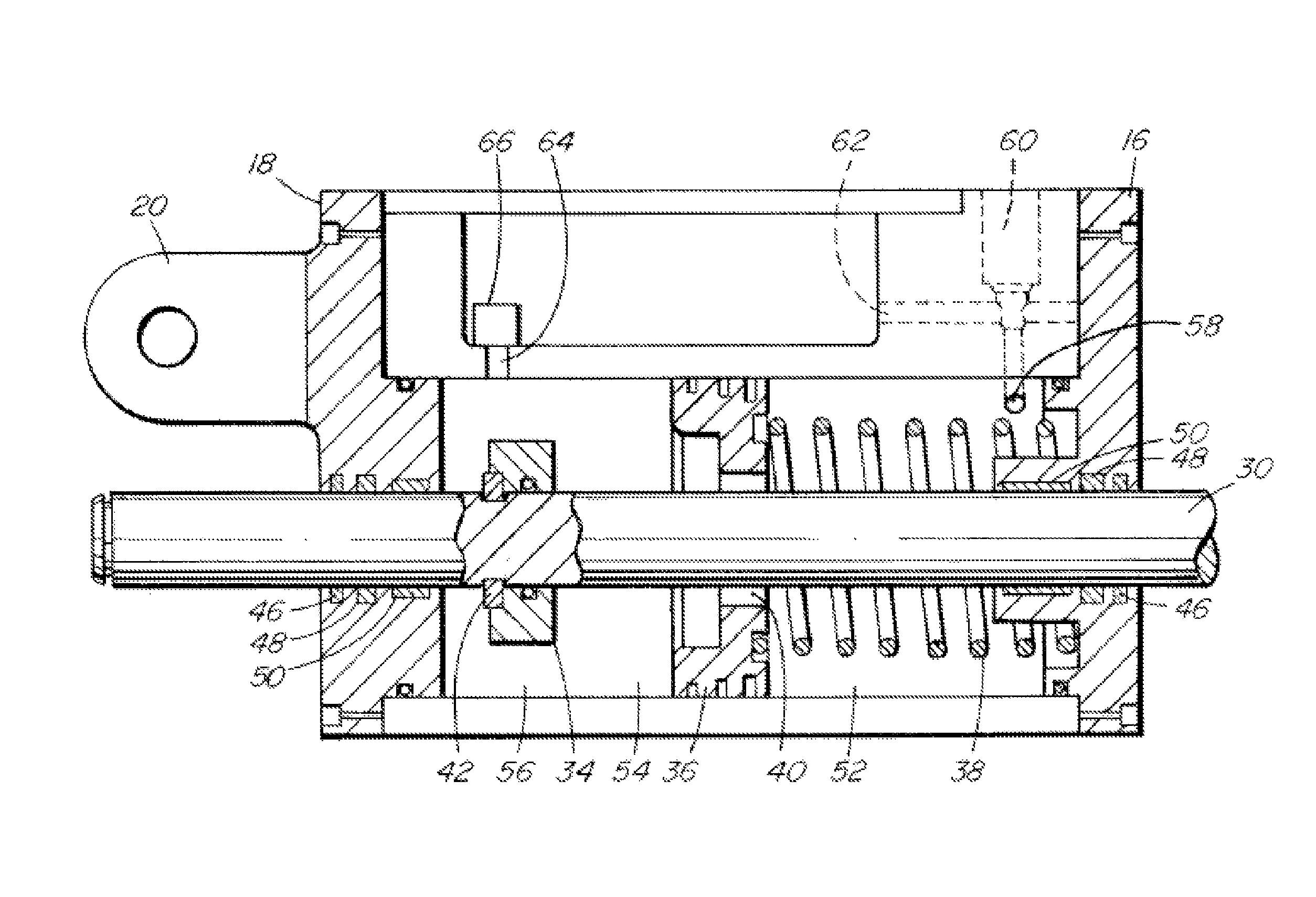Spring wing controller
a controller and spring wing technology, applied in fluid-pressure devices for scotch-blocks, roads, transportation and packaging, etc., can solve the problems of noise, damage or wear to the spring wing and the frog, and the rate of closure is relatively slow, so as to minimize pressure spikes and oil cavitation
- Summary
- Abstract
- Description
- Claims
- Application Information
AI Technical Summary
Benefits of technology
Problems solved by technology
Method used
Image
Examples
Embodiment Construction
[0028]Referring to FIG. 1, the controller 10 of the invention comprises a casing 12 having a body 14 capped by front 16 and rear 18 end caps. A rear end cap 18 may be provided with a connecting mechanism 20 of any suitable configuration, to securely attach the controller 10 in place in the switch. In this context, the words “caps” does not necessarily require that the front and rear ends of the body 14 be separate pieces; the body 14 may be formed with integral front and / or rear portions. The body 14 may itself also be formed of one or more pieces.
[0029]An internal fluid reservoir 22 (shown only in FIG. 5), which is preferably covered by a removable cover 24 and provided with a fill valve 26, is also provided to hold a hydraulic fluid, such as oil or other suitable incompressible fluid. A fluid flow metering device, which is preferably externally accessible, such as via a cavity 28, is also provided to allow control and adjustment of the fluid flow through the controller 10, as will...
PUM
 Login to View More
Login to View More Abstract
Description
Claims
Application Information
 Login to View More
Login to View More - R&D
- Intellectual Property
- Life Sciences
- Materials
- Tech Scout
- Unparalleled Data Quality
- Higher Quality Content
- 60% Fewer Hallucinations
Browse by: Latest US Patents, China's latest patents, Technical Efficacy Thesaurus, Application Domain, Technology Topic, Popular Technical Reports.
© 2025 PatSnap. All rights reserved.Legal|Privacy policy|Modern Slavery Act Transparency Statement|Sitemap|About US| Contact US: help@patsnap.com



